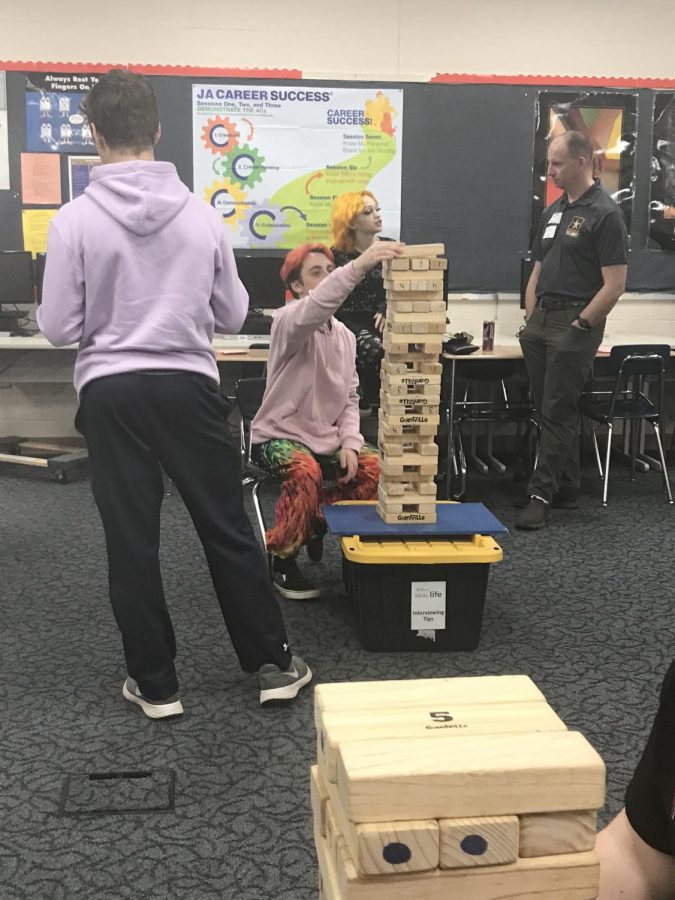Juniors Participate in Junior Achievement’s Financial Literacy and Responsibility Program
March 29, 2023
On March 23, the junior class participated in the Junior Achievement Financial Literacy and Responsibility program for the sixth consecutive year.
The program ran throughout the school day, starting at 8:35 a.m. in the auditorium with opening remarks that briefly described the day students would have.
At 8:50 a.m. the juniors were split into colored groups with about 15 students per group.
One of the four stations was Interviewing Tips in room eight. Juniors played giant Jenga with questions about what to do and what not to do during, before, or after an interview.
Students talked about the basics of a resume and important information to have on them. They also learned that they should regularly update their resumes.
After session one, the students moved to their next session: Is the Price Right?
Modeled after the popular show The Price is Right, students worked in four groups and had to guess the price of different items varying from laundry detergent to M&M’s.
The most expensive item was a pack of 20 batteries for $19.49. The least expensive was Arm & Hammer baking soda for .99 cents.
Every time a group got a guess right, they earned a fake $100 bill.
At 9:55 a.m. the students moved to their third session, REAL LIFE #Adulting.
In this session, students played the game “Life” in life-size. Students were the game pieces and had to make money-based decisions. For example, students had to decide whether to work or college, then questions such as buying or renting homes, etc.
True to form, students earned money at certain spaces on a payday or lost money based on real-life losses–a new roof.
The goal of these activities was to help students realize the importance of remaining open-minded about the choices they have ahead of themselves and to think about the opportunities they have.
After REAL LIFE #Adulting, students moved to room 11 for the session “My Brand”. Students talked about what their brand is and how everything they do affects our brands.
Students then watched a video that talked about building a brand and how a brand can be developed.
Students then played Apples to Apples, where the cards had defining words that they had to match to other students in their groups.
At 11:00, juniors met in the cafeteria for lunch, and at 11:35 the students split off into their last sessions.
From 11:35 to 1:35, students stayed in one half of the gym and did “Budget Builder”; students chose a binder that had an already created persona, such as a 27-year-old with one child and their job. It also identified financial information, such as their credit score.
Here, volunteers walked students through a series of scenarios where they learned how to budget their money properly. The goal was for students to make choices where they ended up with money left over after bills and other living expenses.
At 1:40 p.m., students reconvened in the auditorium for a round of trivia based on what they learned throughout the program, winning Hershey bars for the correct answer.
Juniors have this program to look forward to each year, and it takes a lot of coordination between Junior Achievement and consumer math teacher Eric Updegrove who inherited the preparations for the program from Business teacher Mike Snyder.
Updegrove stated that this side of preparations involved creating the groups, which are randomized, and preparing the gym and classrooms for the day with chairs and tables.
He stated that the goal was to have the juniors think more about financial responsibility and promote discussions about ideas learned between students with their guardians.


